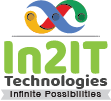Johannesburg, 04 Apr 2019
The Internet of things (IOT) offers numerous potential opportunities for businesses to improve operational efficiencies, generate new products and implement new ideas. However, it is important to bear in mind that many applications for IOT are still largely exploratory.
Before jumping on the IOT bandwagon, it is important to define your business challenge as well as the operational requirements of a potential IOT solution. Without the right business case, IOT projects will fail to deliver any value, and could end up being an expensive waste of resources, says Vishal Barapatre, CTO at In2IT Technologies.
The IOT is essentially a converged network of sensors, gateways, portals and platforms that generate data. This data has big potential and can be harnessed, analysed and used to improve business insight, improve efficiency, reduce costs and more. Some of the applications include proactive management and maintenance of machinery, vehicles and security, enhancing operational efficiency, and leveraging data from sensors to drive enhanced business decision-making.
However, defining your use case is critical. Many businesses currently make the mistake of fixating on technology and trying to build a business case around it. As with any technology, a more effective approach is to identify a business need or operational challenge, and then build an IOT solution to solve it. Once you have a defined business case, the next step is to identify the most appropriate technologies to address it. Here, one must then look at integrating these technologies or the technology into the existing infrastructure of the business.
There are many industries where IOT has successfully been deployed or where there is significant potential. In the financial services and insurance sectors, for example, connected sensors can be used to monitor vehicles, sending information like location, speed, acceleration, deceleration and so on. This can be used to mitigate insurance fraud by determining when and where an accident occurred and who may have been responsible for causing it. Retailers can also make use of IOT to manage warehouses and stock levels, implement self-checkout services, automatically calculate the cost of a shopping cart, and automate payment on exit. Within the agricultural sector, sensors can be used to monitor crops and automate water use or deliver alerts to potential risks and hazards, such as fire. These are just some examples of potential uses for IOT... there are practically limitless applications.
However, when deploying an IOT solution, the choice and use of technology become key. Not all available technologies may be suitable across all industries. The connectivity protocol should be established to avoid buying into a technology that may be unnecessarily expensive. For example, an IOT solution that uses Global System for Mobile communication (GSM) to connect, may not be needed within a warehouse environment where cheaper, shorter range WiFi or RFID technology will work.
While concerns around security are justified, as the IOT becomes increasingly prevalent, vendors will be better able to close loopholes, and the benefits will begin to outweigh the risks. One thing is for certain, the IOT is growing, and it is fuelling a global behavioural change. Socially and culturally, connectedness coupled with data insights means we are developing an expectation of service providers to anticipate what we need, and this is driving a more impatient yet far more aware and conscious society. Slowly, we are moving towards an Internet of everything environment, where people and technology integrate into a global network, opening up new avenues of opportunity for businesses and individuals alike.
Share
